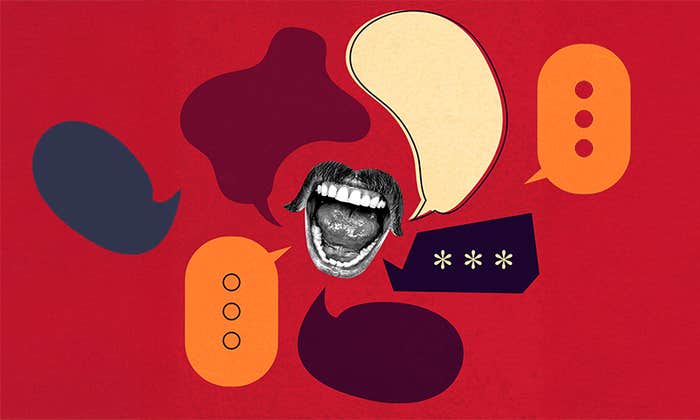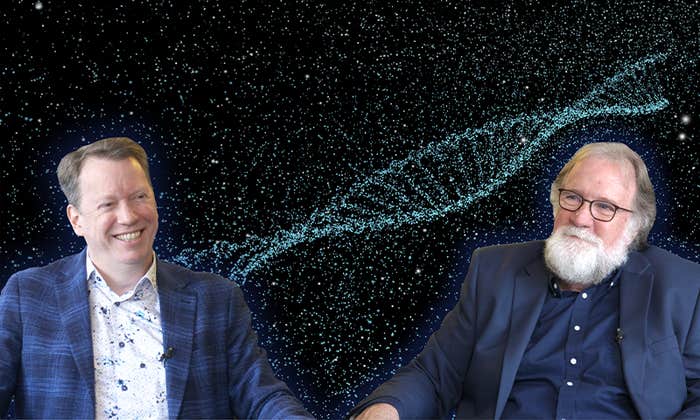
The relentless and often unpredictable coronavirus has, among its many quirky terrors, dredged up once again the issue that will not die, science versus pseudoscience. The scientists, experts who would be the first to admit they are not infallible, are now in danger of being drowned out by the growing chorus of pseudoscientists, conspiracy theorists, and just plain troublemakers who seem to be as symptomatic of the virus as fever and weakness.
How is the average citizen to filter this cacophony of information and misinformation posing as science alongside real science? While all that noise makes it difficult to separate the real stuff from the fakes, there is at least one positive aspect to it all.
A famous aphorism by Charles Caleb Colton, a popular 19th century English cleric and writer, says: “Imitation is the sincerest form of flattery.”
The frauds and paranoid conspiracy-mongers who would perpetrate false science on a susceptible public are at least recognizing the value of science—they imitate it. They imitate the ways in which science works and make claims as if they were scientists because even they recognize the power of a scientific approach. They are inadvertently showing us how much we value science. Unfortunately they are just shabby counterfeits.
If someone claims to know something for certain, the only thing for certain is they are trying to fool you.
Separating real science from pseudoscience is not a new problem. Philosophers, politicians, scientists, and others have been worrying about it since science—based on experiment and not opinion—arrived in the 1600s. The original charter of the British Royal Society, the first organized scientific society, stated that at their formal meetings there would be no discussion of politics, religion, or perpetual motion machines. The first two of those for the obvious purpose of keeping the peace. But the third is interesting because at that time perpetual motion machines were one of the main offerings of the imitators, the bogus scientists who were sure that you could find ways around the universal laws of energy, and make a buck on it. The motto adopted by the society was, and remains, Nullius in verba, Latin for “take nobody’s word for it.”
You might think that telling phony science from the real thing wouldn’t be so difficult, but events, historical and current, tell a different story, often with tragic outcomes. An estimated 350,000 additional HIV deaths occurred in South Africa because of neglected treatment caused by the conspiracy theories of the country’s elected president. It’s surprisingly easy to dress up phony science as the real thing by simply adopting, or appearing to adopt, the trappings of science.
The anti-vaccine movement is based on suspicion of authority, beginning with medical authority. It’s no small irony the movement is based on fraudulent data, published by the now disgraced Andrew Wakefield, an English gastroenterologist. It’s true that much of science is based on suspicion of authority. Science got its start when the likes of Galileo and Copernicus claimed that the church, the state, even Aristotle, could no longer be trusted as authoritative sources of knowledge. But Galileo and those who followed him produced alternative explanations, and those alternatives were based on data that arose independently from many sources and generated a great deal of debate, and, most importantly, could be tested by experiments that could prove them wrong. The anti-vaccine movement imitates science. It still cites the discredited Wakefield report and claims that all subsequent reports, which show no connection between vaccinations and autism, are cover-ups. In the end they offer nothing but suspicion. That’s paranoia, not science.
There are those who try to cloak their motives in the trappings of science by claiming they are taking the scientific posture of doubt. Science, after all, depends on doubt. Every scientist doubts every finding they make. Every scientist knows they can’t possibly foresee all possible instances or situations in which they could be proven wrong, no matter how strong their data. Einstein was doubted for two decades, and cosmologists are still searching for experimental proofs of relativity. Science progresses by doubt. In science, revision is a victory.
But the imitators merely use doubt to suggest that science is not dependable and should not be used for informing policy or altering our behavior. They claim to be taking the legitimate scientific stance of doubt. They don’t doubt everything, only what is problematic for their individual enterprises. They may not doubt the value of blood pressure medicine to control their hypertension. But they should because every medicine has side effects. We don’t completely understand how blood pressure is regulated and if there may not be better ways of controlling it. But we take the pills because the science is sound, even when it is not completely settled. Ask a hypertensive oil executive who says climate science should be ignored because there are uncertainties in the data if he is willing to forgo his blood pressure medicine because it has its share of uncertainties and side effects.
Everyone seems to have a story of an uncanny astrological prediction that came true. But detailed star maps and occasionally correct predications are just the trappings of science. A real scientific test would be to clip out the horoscopes and cut off the labels so you don’t know which signs are connected to which predictions. Now pick one at random. It will work just fine for you. Pick another. It will work also. None of them are ever wrong. This cannot be science.
The same is true for the bewildering variety of brain-function enhancers being pitched with their “scientifically proven benefits.” The purveyors of these products ask if you seem to be more forgetful, have less energy, are less able to concentrate? Well, of course you have all those symptoms. Everyone does. Unless you track down an underlying pathology with a brain scan or sophisticated psychological test, the “cure” will always work because there is no disease. A lengthy series of objective tests may lead to a diagnosis of Parkinson’s disease. This is followed by narrowly prescribed drug treatments that have been worked out over several years of controlled trials and clinical experience. Even then there are no magic bullets. The drugs must be carefully dosed to each individual, and they may only have a limited effectiveness. But in this case there is a disease with recognizable pathology and a potential treatment aimed specifically at that pathology. The treatment may not work perfectly—unlike the latest herbal wonder, which of course fixes your brain and all that’s not wrong with it.
The success of pseudoscience is not due to gullibility on the part of the public. The problem is that science is recognized as valuable and that the imitators are unfortunately good at what they do. They take a scientific pose to gain your confidence and then distort the facts to their own purposes. How does one learn to spot the con without getting a Ph.D. and spending years in a laboratory? What can be done to make the distinction clearer?
Several solutions have been tried, and seem to have failed. Radio and television shows about the latest scientific breakthroughs are a noble attempt to give the public a taste of good science, but they do nothing to help you distinguish between them and the pseudoscience being purveyed on the neighboring channel and its “scientific investigations” of haunted houses.
Frauds imitate the ways science works because even they recognize the power of a scientific approach.
Attempts to inculcate what are called “scientific habits of mind” are of little practical help. These habits of mind are not so easy to adopt. They invariably require some amount of statistics and probability, much of which is counterintuitive. One of the great values of science is to help us counter our normal biases and expectations by showing the actual measurements may not bear them out. Then there’s the math. No matter how much you try to hide it, much of the language of science is math (Galileo said that). And half the audience is gone with each equation (Stephen Hawking said that). It’s hard to imagine a successful program of making a non-scientifically trained public interested in adopting the rigors of scientific habits of mind. Indeed, I suspect there are some people who would be rightfully suspicious of changing their thinking to being habitually scientific. Many scientists are frustrated by the public’s inability to think like a scientist, but in fact it is neither easy nor always desirable to do so. And it is certainly not practical.
There is a more intuitive and simpler way to tell the difference between the real thing and the cheap knock-off. In fact, it is not so much intuitive as counterintuitive, so it takes a little bit of mental work. But the good thing is it works almost all the time. True science is mostly concerned with the unknown and the uncertain. If someone claims to have the ultimate answer or they know something for certain, the only thing for certain is they are trying to fool you. Mystery and uncertainty may not strike you right off as desirable or strong traits, but that is precisely where one finds the creative solutions that science has historically arrived at. Yes, science accumulates factual knowledge, but it is at its best when it generates new and better questions. Uncertainty is not a place of worry, but of opportunity. Progress lives at the border of the unknown.
How much would it take to alter the public perception of science to appreciate the unknowns and uncertainties along with facts and conclusions? Less than you might think. We make decisions every day based on uncertainty, such as what to wear with a 60 percent chance of rain. It’s not difficult to extend that to science, in spite of what you were taught in school about all the hard facts in those giant textbooks.
Good science provides clear evidence that may only go so far. Scientists have to speculate, which could go one of two or three ways, or maybe some way they haven’t seen yet. But like your blood pressure medicine, the stuff we know is reliable even if incomplete. Unsettled science is not unsound science. The honesty and humility of someone willing to tell you that they don’t have all the answers, but they have some thoughtful questions to pursue, is easy to distinguish from the charlatans who have ready answers or claim that nothing should be done until we are an impossible 100 percent sure.
Imitation may be the sincerest form of flattery. The problem, as we all know, is that flattery will get you nowhere.
Stuart Firestein is a professor of neuroscience and former chair at the Department of Biological Sciences, Columbia University. He is the author of two books about science for the public, Ignorance: How It Drives Science, and Failure: Why Science Is So Successful.
This post (in a slightly different version) was originally published jointly by Leapsmag.com and the Aspen Institute Science & Society Program


























